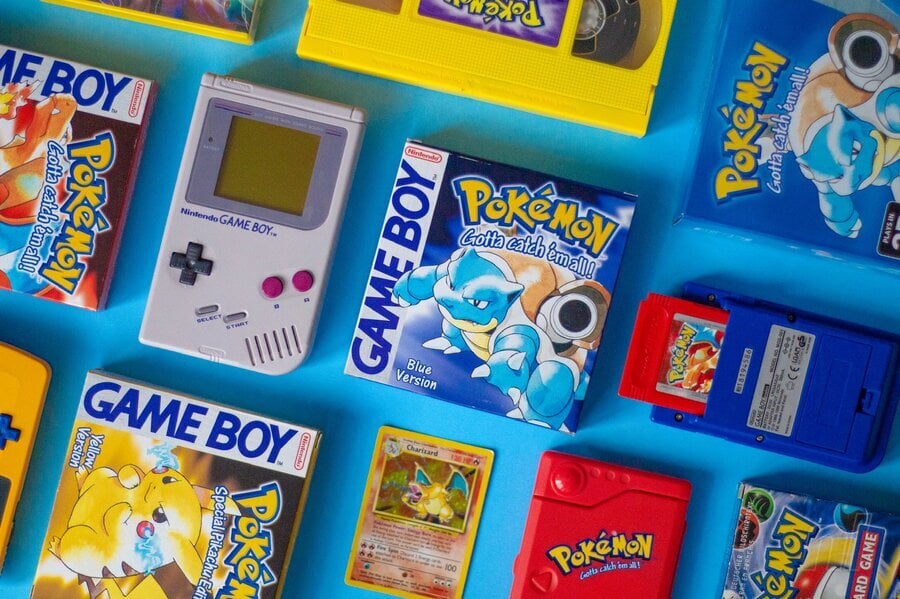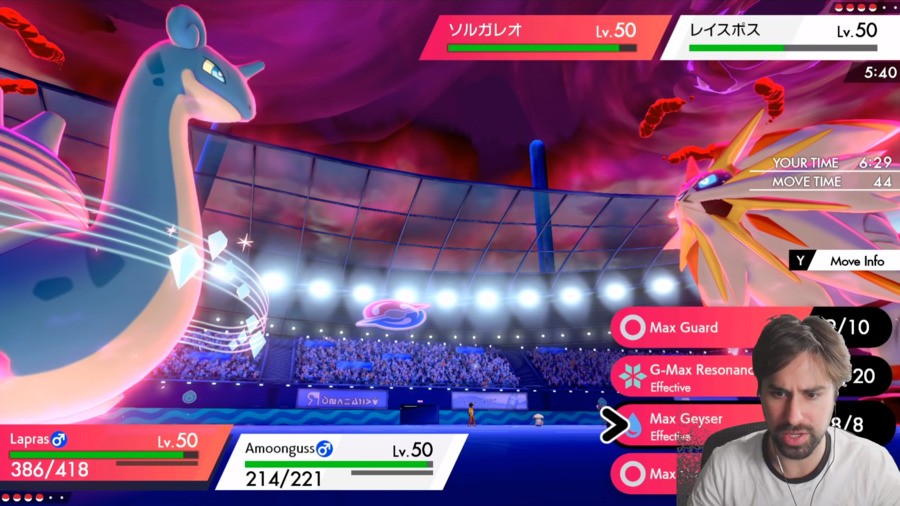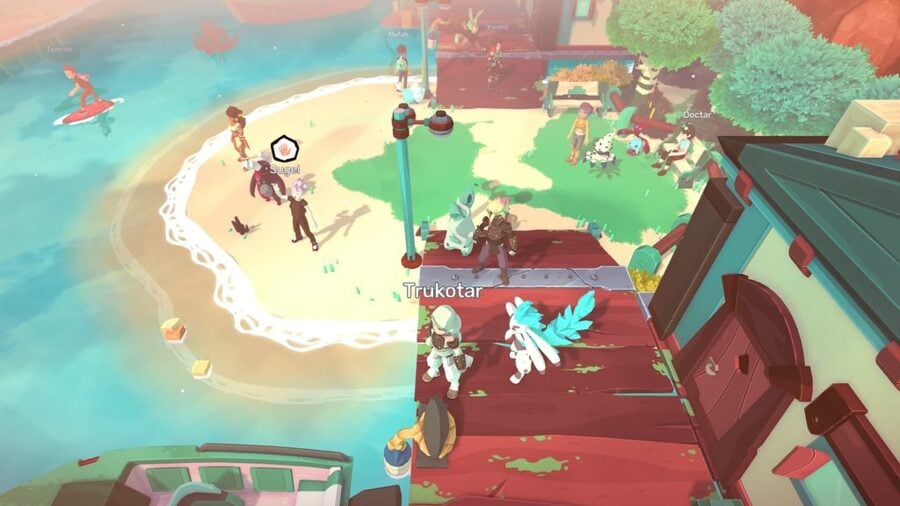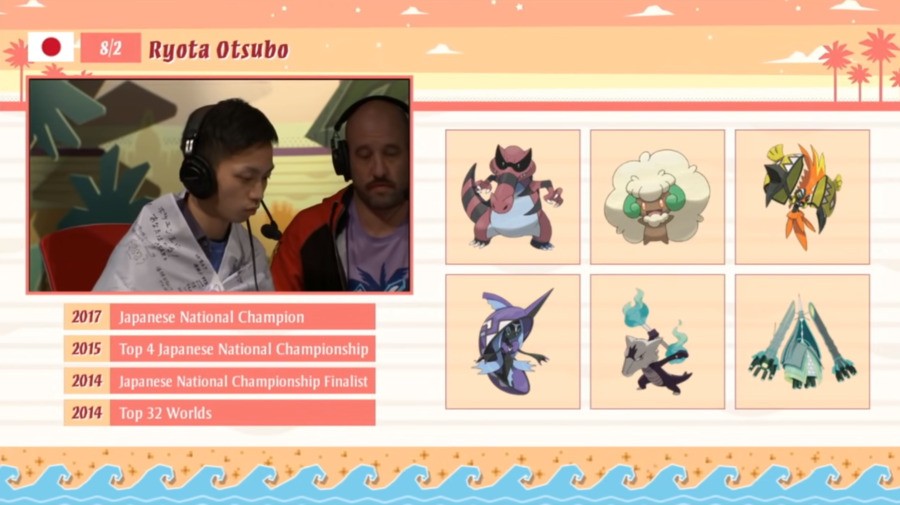
In 1998 my Canadian elementary school banned everything to do with Pokémon. The games, the trading cards, and discussions about the anime – all of it was off-limits as Pocket Monster fever swept through North America like a swarm of Rattata, distracting us from our in-class reading of Anne of Green Gables. That did not stop me and my classmates from passing notes about whether or not there really was a Mew beneath the truck parked near the S.S. Anne when Mrs. Hubbard turned her back. Nor did it stop us from pitying those poor souls whose parents would not buy them a Game Boy, let alone a copy of Pokémon Red or Blue. To us, that was a step removed from child abuse.
Many people can relate similar anecdotes about playing the quintessentially classic Red and Blue. By ‘quintessential’ I mean Pokémon games stand out as some of the most memorable and influential gaming experiences ever made. Yet the special thing about Pokémon is this phenomenon which isn’t exclusive to those of us in Canada or born around 1990. Up until this year’s Pokémon Legends: Arceus, every mainline Pokémon game is a classic for another generation of kids the world over. Somehow, Pokémon developer Game Freak continues to capture cultural touchstone after cultural touchstone as if it were as easy as catching a Caterpie.
Subscribe to Nintendo Life on YouTube841k
"I didn’t know what shiny Pokémon were at the time. I asked my friend why the Pokémon sparkled and he said it meant it was holding a Master Ball
“My first Pokémon game was FireRed,” Wolfe Glick told me in an email interview. 2004’s FireRed began Glick’s journey to becoming the VGC World Champion in 2016 and one of the most recognizable competitive trainers. Pokémon International’s VGC – which stands for the obliquely named Video Game Championships – gathers dozens of skilled players from around the world every year to compete in double battles for prizes and glory.
“I was probably around eight years old when I got it,” Glick elaborated. “I have many fond memories playing with my brother and neighbours on the Game Boy Advance. I remember it was hard to see the screen when it was really bright, and I ran into a shiny Dodrio in the Safari Zone. I didn’t know what shiny Pokémon were at the time. I asked my friend why the Pokémon sparkled and he said it meant it was holding a Master Ball. I caught the Dodrio and was upset when it had no held item, and then forgot about it for six or seven years when I suddenly remembered and went back to find my first ever shiny.”

Glick’s experience could have been any one of our own Pokémon stories – who hasn’t taken bogus PokéAdvice from a friend before? Anyone who has played a Pokémon game can relate as easily as they can remember their first starter. For Glick and I, it was Charmander, yet a gap of over five years removed our choices from one another.
However, few people have had Pokémon change the course of their life the way developer Game Freak’s monster-collector has for Glick. When searching for strangers online to battle over wifi at 12 years old, Glick discovered an in-person tournament about 40 minutes from where he lived. The tournament was in a format he’d never played before – VGC’s double battles – but Glick still managed to learn the format, win the event, and secure a ticket to the US Nationals – which he also won, granting him access to the World Championships where he placed 6th. The following year he placed 2nd at Worlds and knew he had to keep competing.
Few people have managed to turn competitive Pokémon into a career, but Glick has done just that. He now produces both informative and humorous Pokémon-related videos for his YouTube channel with over 500k subscribers, along with a valiant effort to help ease new players into the scene with VGCGuide – all while still competing. In fact, he’s on his way to the 2022 World Championships in London this August.
Pokémon’s influence isn’t limited to journalists like myself and professional players like Glick. Guillermo Andrades, Game Director of the upcoming creature-battler Temtem, also shared with me his earliest Pokémon memories. Unlike Glick and I, he chose Squirtle.
“I started Pokémon at the very beginning with Pokémon Blue. I was obsessed with the game to the point of consuming everything Pokémon,” Andrades told me. “I started playing the Pokémon TCG due to it and my most fond Pokémon-related memories are about spending the weekend playing tournaments in my local store and meeting every other kid there.”

For Andrades and his team at Spanish developer Crema, recent Pokémon games inspired them to challenge Pokémon’s conventions rather than mimic them. When asked about Pokémon’s influence on Temtem, Andrades says that Temtem came about because he and his team had lost interest in Pokémon as it pushed to reach a broader and broader audience. Crema wanted to see how the formula Game Freak perfected would adapt to a more difficult and competitive approach. Thus Temtem was born.
Temtem came about because Andrades and his team had lost interest in Pokémon as it pushed to reach a broader and broader audience
Andrades emphasises Temtem’s social elements as something they’ve looked to innovate upon. Seeing other players in the overworld – Temtem, after all, is coined as a massively multiplayer creature collecting adventure – trading or battling with them directly, and having an auction house, are all ways Crema looks to improve the monster-battling formula. And when it comes to the battles themselves, the removal of random factors – such as a 10% chance to freeze – creates a more balanced and fair experience that rewards careful play rather than luck.
But Pokémon players in Canada, America, and Spain can’t hold a Litwick to how Pokémon moulded the cultural zeitgeist of Japan from 1996 onward. As popular as it is in the West, every single child in Japan knows what a Pokémon is and the majority have likely played a Pokémon game. There are Pokémon cafes. Donut shops sell Pokémon-themed donuts. McDonald’s puts out Pikachu-flavoured McFlurries. Many major cities have a Pokémon Centre selling everything from stuffed toys to Pokémon cards. I say this as someone who has lived in Japan for the last eight years – Pokémon is as common here as a Zubat is in Mt. Moon.
But don’t take my word alone for it. I contacted the 2017 VGC World Champion Ryota Otsubo to hear his thoughts on Pokémon’s influence (and did my best to accurately translate his Japanese).
“The first time I played was the Pikachu version (Pokémon Yellow). It was my first time playing a game, and I remember being overjoyed when I defeated a strong gym leader. I really liked the Pokémon called Lapras. The channel I have on YouTube is called the Naminori Channel (Surf Channel), which is named after Lapras.”
Much like Glick, Otsubo also found success by finishing second place at a local tournament. He thought if he mastered more battles, he might be able to reach the top someday. 10 years later Otsubo did just that, becoming the 2017 VGC World Champion.

“I think [Pokémon is so influential] because of its attractive characters and battle system. It is made not only for children but also adults, so people all over Japan and the world can enjoy playing Pokémon.”
Indeed, I’ve spent much of my time in Japan teaching, and despite having little in common with my students, we could always discuss Pokémon no matter what their age group. When Brilliant Diamond and Shining Pearl were announced, many of my high school-aged students couldn’t wait to relive their very first Pokémon adventure. A recent trend has many of them slotting rare Pokémon trading cards into their clear smartphone cases, which surprised me, given that doing so in my high school would’ve been like using Follow Me against every bully in the student body. When Pokémon Legends: Arceus released in January, I had junior high students telling me every week thereafter which shiny Pokémon they found over the weekend, and assignments they turned in often have my favourite Pokémon drawn on them in a desperate attempt for extra credit.
Red and Blue may have started it all, but the franchise as a whole continues to make Pokémon a perpetual classic. Plenty of criticism can be leveraged at Game Freak for how little Pokémon’s formula has evolved over the years, and how — visually, at least — Pokémon has yet to reach modern expectations. Signs indicate that the next mainline entries will shake things up more than ever before, but there is absolutely no doubt that for many young gamers, 2022’s Pokémon Scarlet and Violet will have the same profound impact Red and Blue had on Andrades and I, FireRed had on Glick, and Yellow had on Otsubo. On past evidence, it's almost certain to become quintessentially classic for yet another generation of trainers.





Comments 19
I'm nostalgic for the tone and the writing of the 1st gen.
My first Pokemon game was Pokemon Black which I got way back in 2012 as a birthday gift from a close friend of the time. Even though I had almost no idea what I was doing, I still loved every time I saw something I had never seen before in the game like a big blue toad or a crab with a giant rock on it's back (both of which were pillars of my first ever playthrough). It also helped with my vocabulary growing up, since long complicated words like 'buffeted' and 'effective' came naturally as someone who had seen those kinds of words hundreds of times playing through the games.
I was also completely taken with the world they had set up and how everything felt so sincere, like it was a world that actually could exist. It's the reason why the main thing I look for in Pokemon are interesting designs: both in the Pokemon, characters and region. Because if they can make it feel real and not just something from a video game? That's when it's at it's absolute pinnacle.
It's the reason why BW, SM and Legends Arceus are my favourite games in the entire series: they take the possibilities of worldbuilding that Pokemon as creatures provide and absolutely run with it. Propaganda, dimension hopping, time-travel, world development and acceptance are all topics covered in these ones and every time Pokemon gets deep, it's always incredible.
Anyways sorry for all the probably incoherent rambling, these kinds of articles always get me reminiscing like an old man.
When I was about 8 through to 14, I used to draw a heap of comic books (which I still have... somewhere), and some characters were unsubtly inspired by Sailor Moon, Digimon, and Pokémon with hundreds of odd and/or transforming characters and anthropomorphic whatsits. I'd made my share of games too (including a DOOM 2 wad 20 years ago [!!!!!!!] but I sadly lost my only CD back-up).
I think my love of Pokémon also stemmed from my love of games that featured a diverse array of monsters with unique appearances and behaviours. I absolutely loved the monsters in the Commander Keen games, especially episodes 4-6 (and Dreams), as all of those games contained wildly varied enemies, and with them, different strategies (and frustrations). And they weren't just reskinned enemies or projectile-hurling variants either. Some bounced, some crawled, some flew, some teleported, and some ricocheted off surfaces, and one immobilised the player by slamming a mallet onto the ground, so I was quite disappointed that we kept getting human after human fighter in Super Smash Bros. when Nintendo has such a rich repertoire of fantastical characters at their disposal.
I love the Commander Keen games every bit as much now as I did 30 years ago, and I think they put a lot of modern platformers to shame. There was so, so much talent, imagination, and ingenuity with that humbly-sized development team. In an ideal world, Commander Keen should have been a giant in the video game industry alongside Mario, Pokémon et al. Thank God that the abominable mobile reboot by Bethesda was shelved!
In hindsight, Keen's design philosophies carried into Wolfenstein 3D, which had varying enemies and bosses (albeit decidedly less varied than the former), and later with DOOM and DOOM II, whose memorable enemies have transitioned to DOOM 64, DOOM 3, 2016, and Eternal (with some design/behavioural variation between games), which is more of an indictment on the latter games, because as good as they are, they are still living in the shadows of the originals, which are still every bit as fun today as they were nearly 30 years ago, while the more recent games don't set my imagination alight quite like the classics, but then again, none of the original iD Software boys are involved in the new instalments (that I am aware of).
But back to Pokémon, I love the sheer variety of them, and what they continue to do with them, but I understand that TPCi also needs to slow down due to the sheer quantity of them (which of which comes with their own trademarks, trading cards, and other merchandising), which would be quite overwhelming for newcomers. But as a veteran, I can't get enough. Bring on the next 1000!
Every Pokémon game is someone's first and/or favorite. The gen 4 hype last year was very heartwarming
Huh, I've been playing pokemon since 1998 with Red being the first one then onward to now. even then many of the modern entries haven't kept my attention. X/Y, Sun/Moon, Sword/Shield, & the recent remakes. Ultra Sun/Moon are the exceptions. And I do hold B/W & B/W 2 to high regard.
I used to trade Pokemon left right with my younger cousin in those days when I was still in middle school. I hope Scarlet/Violet can offer something new.
Sidenote: I need to get off my rear & preorder that Steelcase Double Pack. Is Gamestop offering pre-orders of that edition yet?
I grew up with Blue version and somehow missed Gen 2 growing up. I went straight to Emerald. Finally got to experience Johto on the DS during my teenage years. Those first three generations are my favorites, but I also hold Sun and Moon in high regard because I like what the generation did with trials and totem Pokémon to keep things fresh.
My first game was Emerald but I played daily Pokémon Stadium 2 (my brother had it) before that as well as watching the anime every day after school. Soon after that books on Pokémon as well Mystery Dungeon and Pokémon Ranger. Bought a 3DS just for X Y. Love the mons and the series to death. Sword and Shield are probably the worst games in the series (after that Red Blue Yellow), but they're still good enough for me personally because I have 760 hours in it and aren't even done with dlc.
Haven't bought Arceus yet, don't know if I will. Will buy Scarlet Violet though for sure.
I was an early adult mostly into PS2 gaming when I picked up Pearl - mostly for work road trips on my first good job on the GBA SP (still my favorite handheld of all times). Back when Penny Arcade was still funny (that long ago) they were into it so I decided to see what the deal was.
I've been a pokemaniac since. It is fun to see my little children way into it now - although i am wary of them getting too deeply into it.
❗️After playing friend's copy of 🔴 back in mid-2001, I knew I liked Pkm but despite having a 🍇GBC at the time, didn't buy 🥇🥈 as I re-wanted Charmander as my Starter😅
Then on Sunday 4th January 2004, I bought Sapphire🔵 with a Metallic Blue GBA:SP and a year later, I'd buy 🔥🔴 and 'Colesseum'.
After a faulty GAME Memory Card💾 deleted my Pkm, I gave up on Pkm but needed something similar but nothing would scratch that itch until 2007's 'Custom Robo: Arena'.
PoGo📱 re-ignited my love for Pkm but it was 2021 when I played 'LG: Eevee' that re-got me back into it proper.
The levelling-up system took too long in that Game so I moved onto 🗡 and love it.
I found B💎 to be DULL and I don't like the catch-system in 'Arceus'.
I decided to go through my backlog and LOVED ⚫️1 and ⚫️2.
I'm taking a break from Pkm now though (except for PoGo) so I don't get burnt out for when 🔴ScarVio🟣 is released later on this year🤞🏽
My favorite games are X and Y. Yes, they’re definitely the second most flawed games after Sword and Shield, but I like them anyway. Why? They were my first Pokémon games back in 2016. Simple as that. Seriously though, these games deserved so much better than they got. Some very simple changes to the story, making the difficulty more akin to an actual game than a tutorial, and actually explaining Zygarde would’ve made a perfect Pokémon Z that could’ve been up there with Black and White, Platinum and Emerald. Kalos is such a awesome region that has so much personality, it just needed a good story to justify it IMO.
I started to play Pokemon games for the first time on 3DS from Pokemon X in year 2013 after being curious to see some kids carrying 3DS and playing Pokemon X/Y during that time.
At first, I didn't have much interest with the game and I sold my Pokemon X in December 2014 but I bought Pokemon X again in year 2016 when I understand the appeal of playing Pokemon games.
From the experiences playing Pokemon games on 3DS, it lead me to discover Pokemon games on NDS and I could pick Pokemon White 2 & Black 2 (with expensive price). Also, I played Pokemon Let's Go Pikachu and Sword on Nintendo Switch.
As I played more Pokemon games, it lead my curiosity for Yokai Watch games on 3DS and surprisingly, the games have more appeal than Pokemon games as I prefer the battle system in Yokai Watch games despite I don't like the fact you cannot give command directly to your Yokai, just only able to point which enemies to attack. At this point, I really wish Pokemon games can use 3 vs 3 battle to make it stronger team and some strategy to defeat the opponents.
First game was Blue had my dad take me to Target after playing it at my friend Anthony's house(never heard of Pokemon before this), bought Silver through money order from Nintendo Power and it came with these sweet Bellosom and Lugia Pins. I ended up seeing Ruby on the shelves at a Walmart not even realizing a 3rd game had been made and played all the way through before letting a friend borrow it. He never returned it and I fell out of Pokemon until X/Y.
I started my Pokémon journey with Pokémon Yellow and played every game until SoulSilver. I then somehow thought it was necessary for me to outgrow Pokémon in my late teens and skipped Black/White 1&2 & X&Y. I was so incredibly wrong! I jumped back with Alpha Sapphire & have gotten every game since. Booting up any Pokémon game remains as magical to this day as it ever was.
I remember playing Red/Blue during church with the pastors adopted son. Good times.
Also those were the days of the internet being new and everyone wanted Mew. So I'd write up extremely complicated guides to get him that I said I found on the net and gave to people just to see if they'd waste their time doing odd things to get him. They did. It was amusing.
@Waka_the_Prophet That story hit me right in the heartstrings. I'm so sorry man.

I'm gonna go ahead and be that guy who tells Lowell that quintessential literally translates to "fifth essence" and it means the purest of the five essences (aka "ether"). So for something to have the "Quintessential Essence" is ... very redundant.
Despite my many gripes with the series the past few years, there's no denying the thesis presented here. Pokemon is definitely growing and touching and increasing number of people around the world. I think a large part of that though is the pervasiveness of the franchise, and much less to do with the traditional games.
Pokemon Go is (somehow) still popular, and revitalized a lot of interest in the series. The cartoon being readily available and on Netflix makes it an easy show to put on the for the kids at any time, as opposed to strict TV slots of the 90s and 2000s.
Ironically, it could be those are the things that are bringing down the quality of the real, main games. Pushing to release new Pokemon and characters so they can be incorporated into the franchise, marketed, and then sold is the goal now. There is no need to invest more resources into making a more proficiently made video game, much less one that is made with any kind of passion or respect for the series.
One thing I miss, and that will most likely never recreated, was the mystical aura around Pokemon at the beginning. Game Freak hadn't yet figured out Pokemon, what it was, how the world works etc. and the anime, manga and games went into weird territory, exploring what it could be. At the same time people didn't have access to all the info instantly, there were myths about the games (Mew's truck, Pikablu). Now however, it seems as if they have established some kind of media guidelines behind the scenes, and will never directly depict Pokemon as food for instance, and the secrets of each game are on the internet within days of release, if not before people get their hands on them.
I still don't understand the hate Sword/Shield got.
For me, they are my most favorite and most played Pokemon games. I still play them time to time today. My 10 year old son feels the same.
We did a whole playthrough again, just recently, after we got quickly bored with Legend Arceus (what a repetitive boring game sorry).
Any previous Pokemon game, we barely made it through the story/gyms and then stopped when we were done.
Show Comments
Leave A Comment
Hold on there, you need to login to post a comment...